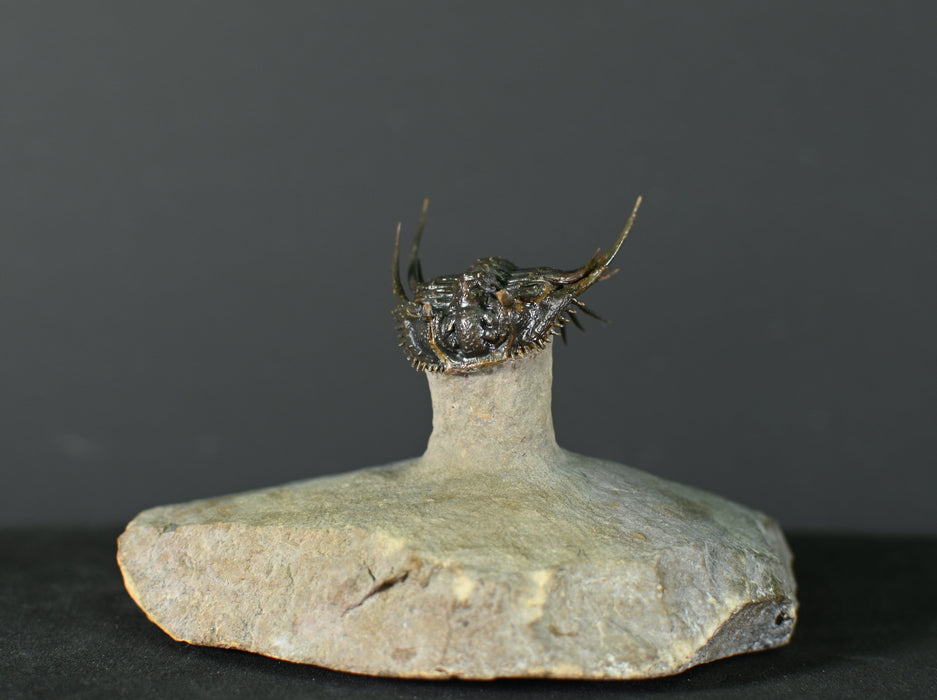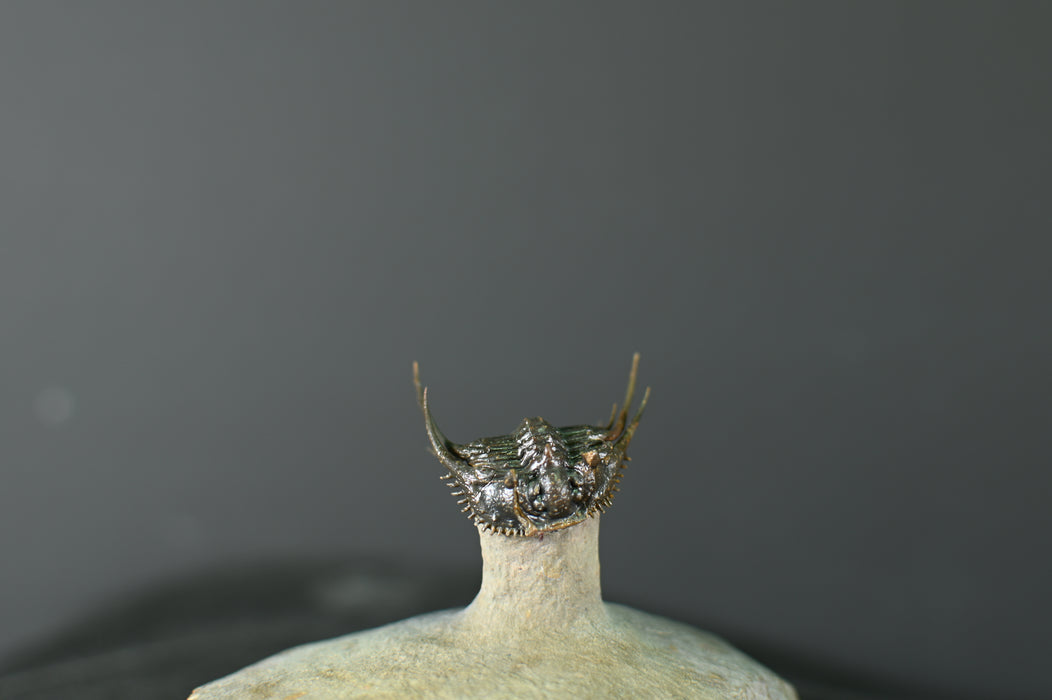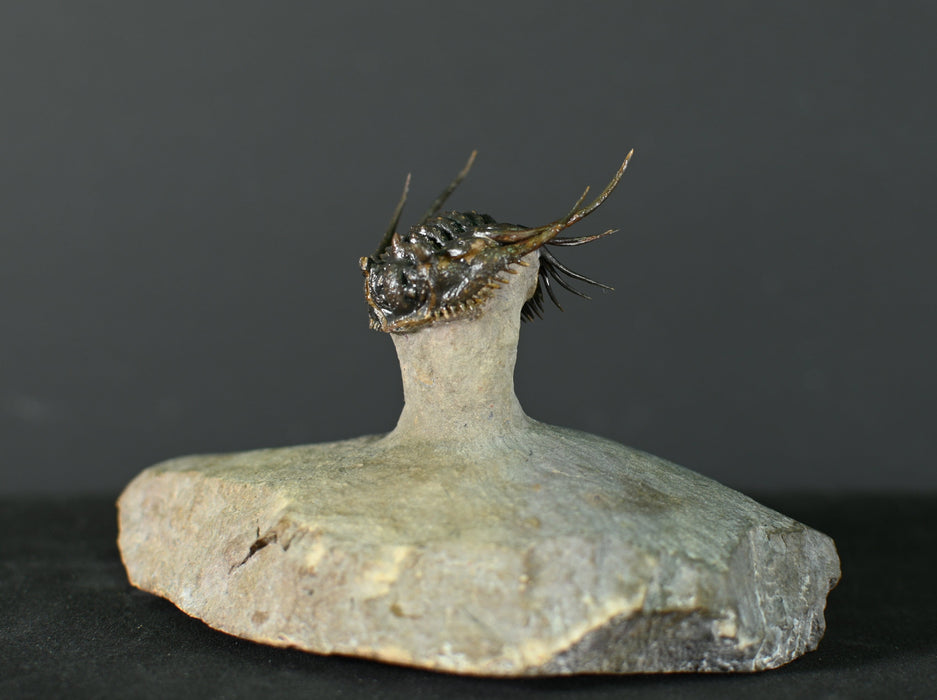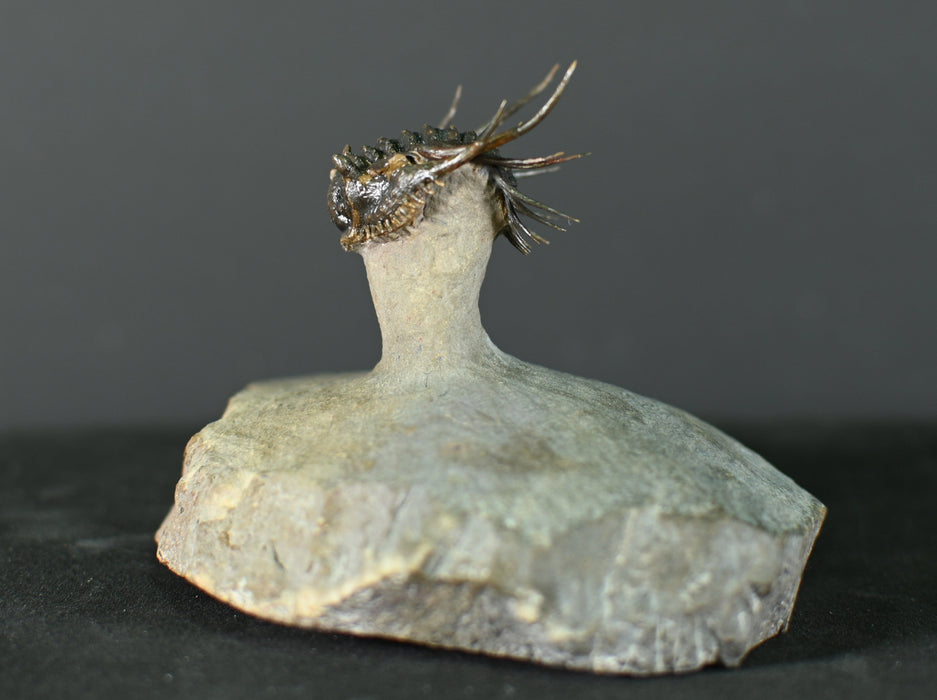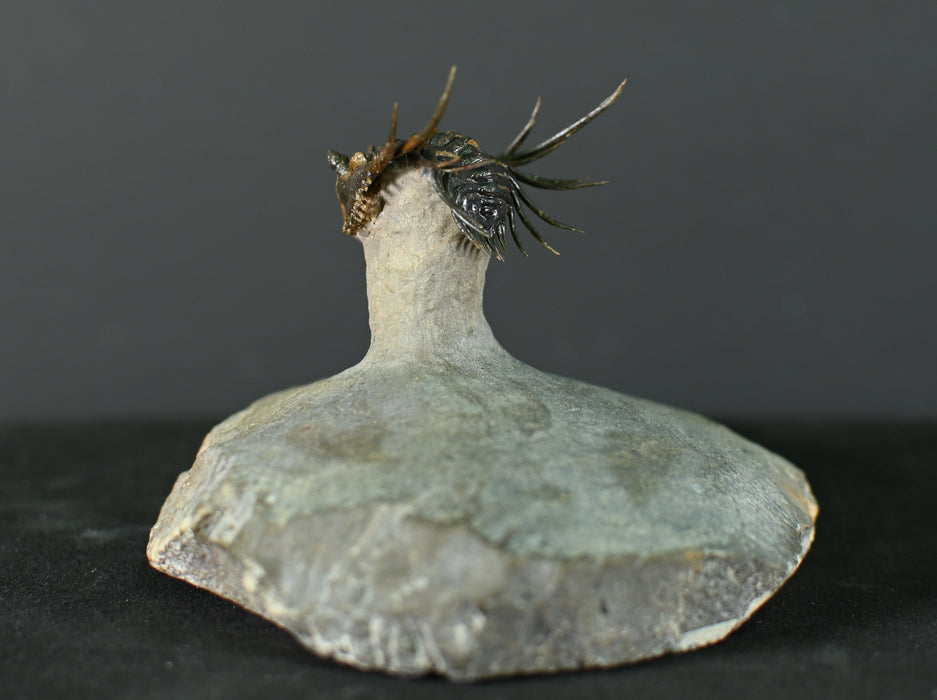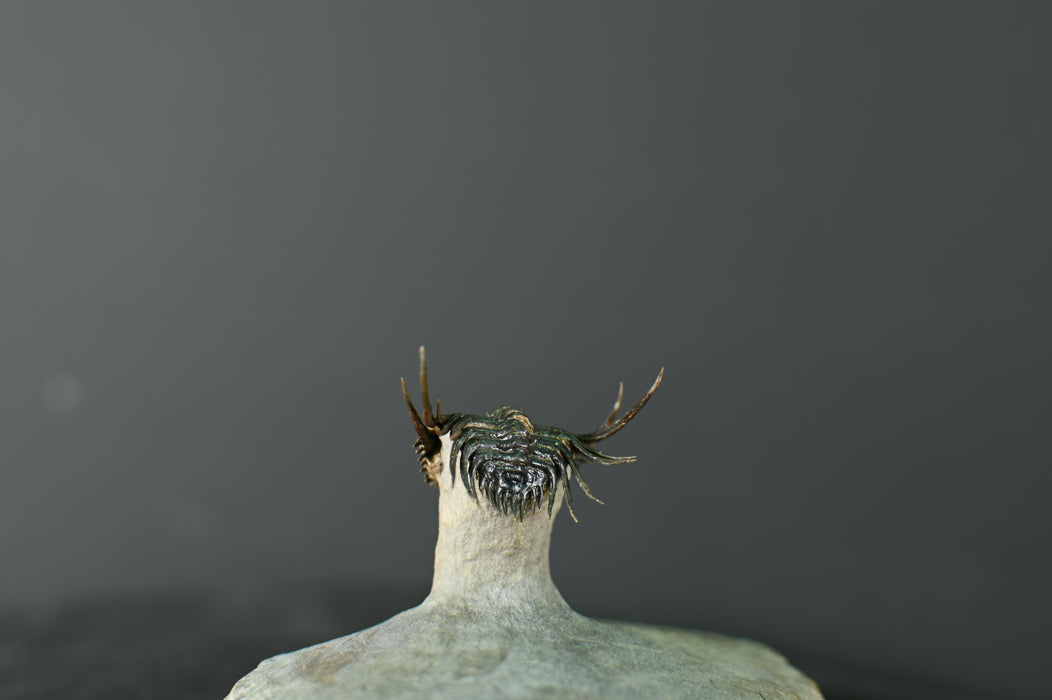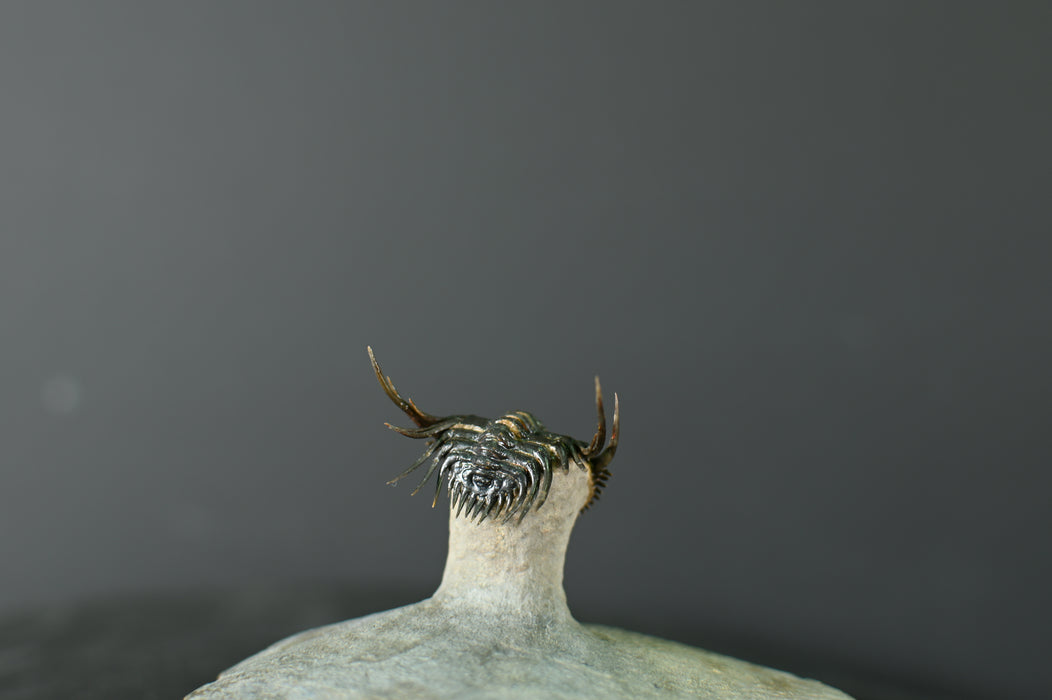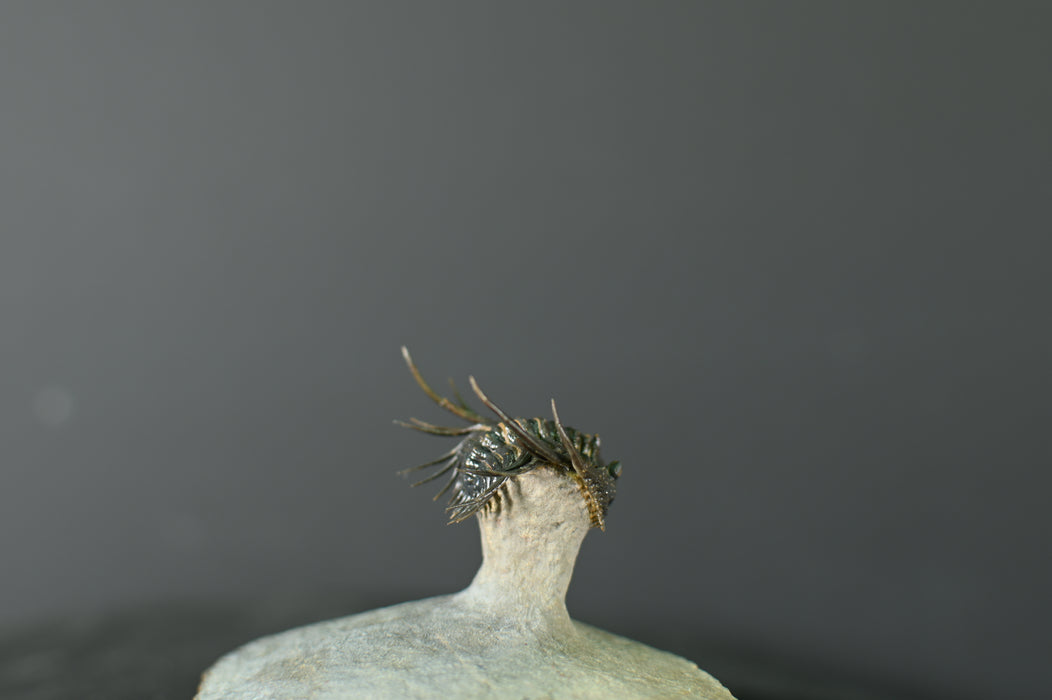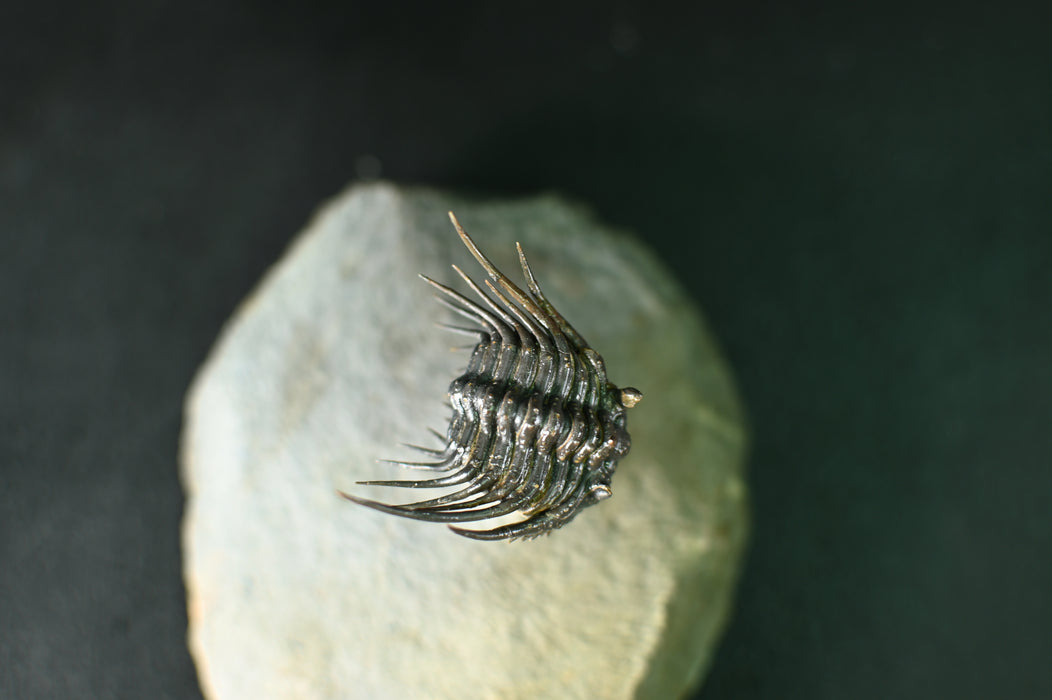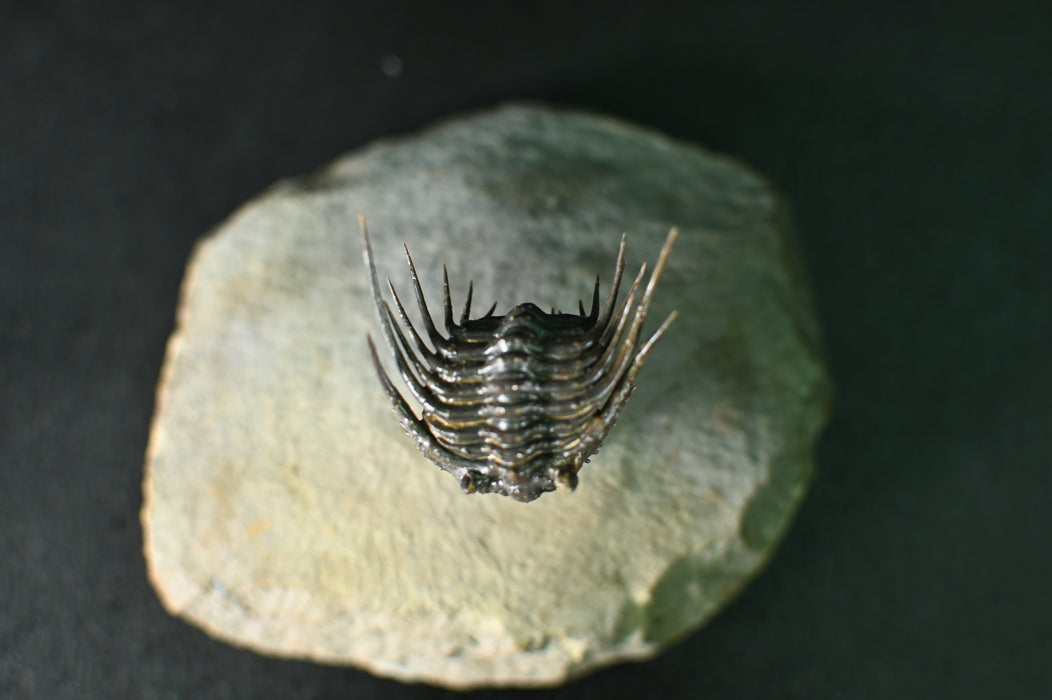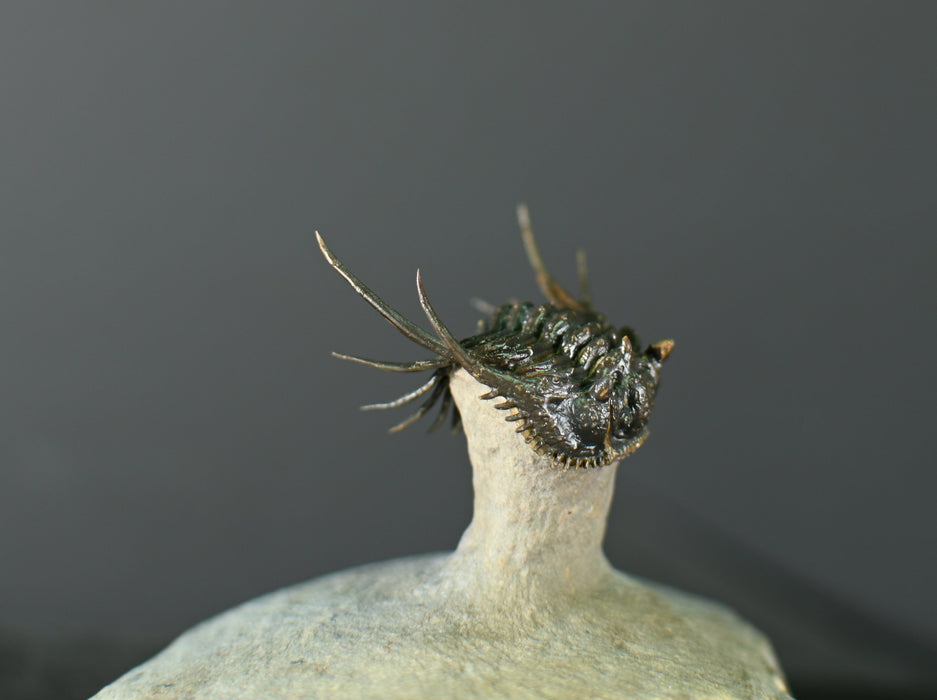
Spiny Leonaspsis Trilobite
Matrix approx. size: 3.5" x 4.25" x 3"
Specimen approx. size: 2" x 1.5"
This specimen does have some restoration. The spines are original, but they were reattached during preparation.
The Leonaspsis is one of the most striking trilobites of the Devonian Period, famous for its dramatic spines. Belonging to the spiny Odontopleurid family, these trilobites lived in the ancient seas that covered parts of Europe, North Africa, and South America.
What makes Leonaspsis so eye-catching is its elaborate exoskeleton. Its head shield (cephalon) is rimmed with strong spines, while the body segments each carry long, sharp pleural spines that give it a fearsome, almost “weaponized” look. Even the tail (pygidium) is fringed with spines, making this trilobite appear much larger and more intimidating than its actual body size of only a few centimeters. Many specimens are covered with small bumps and nodes that add to its rugged, armored texture.
These spines likely served as protection against predators like fish and cephalopods during the Devonian "Age of Fishes." Some scientists also think the spines may have helped Leonaspsis avoid sinking into soft seafloor muds.

